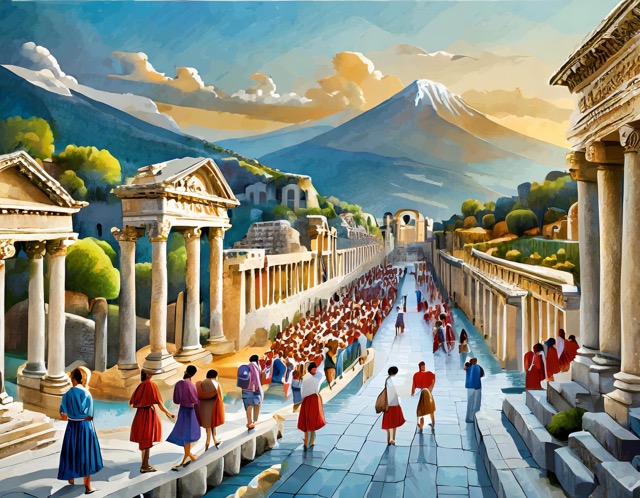- Home
- Life
Life

Life
Ephesus has stood out throughout history as a crossroads of civilizations and a center of culture and commerce. With its rich historical and cultural fabric, Ephesus developed a vibrant social and religious life under the influence of the Greek and Roman periods, becoming one of the most significant civilizations of the ancient world.
During the Roman period, Ephesus was a city where young individuals marked their transition into adulthood by wearing white togas, symbolizing their coming of age. Education held great importance for both genders, with boys attending gymnasiums from the age of seven, where they studied music, literacy, and various other subjects. Education for girls also gained importance during the Roman era. In these institutions, subjects such as history, music, logic, astronomy, Greek language, poetry, measurement, philosophy, mathematics, and mythology were taught.
Sundials and water clocks found in Ephesus homes, used for cloudy or foggy days, not only reflected the understanding of time but also symbolized the city’s wealth.
The transformations Ephesus underwent throughout history became particularly prominent after Alexander the Great, when Lysimachus restructured and re-planned the city. With its harbor and trade routes, Ephesus evolved into a major hub of commerce and culture in the ancient world.
During the Roman Empire, Ephesus became a vital center for early Christianity alongside its thriving trade activities. Saint Paul’s missionary work in Ephesus occupies a special place in the city’s religious history. Moreover, Ephesus was home to the Temple of Artemis, one of the Seven Wonders of the Ancient World, highlighting its religious and cultural heritage.
